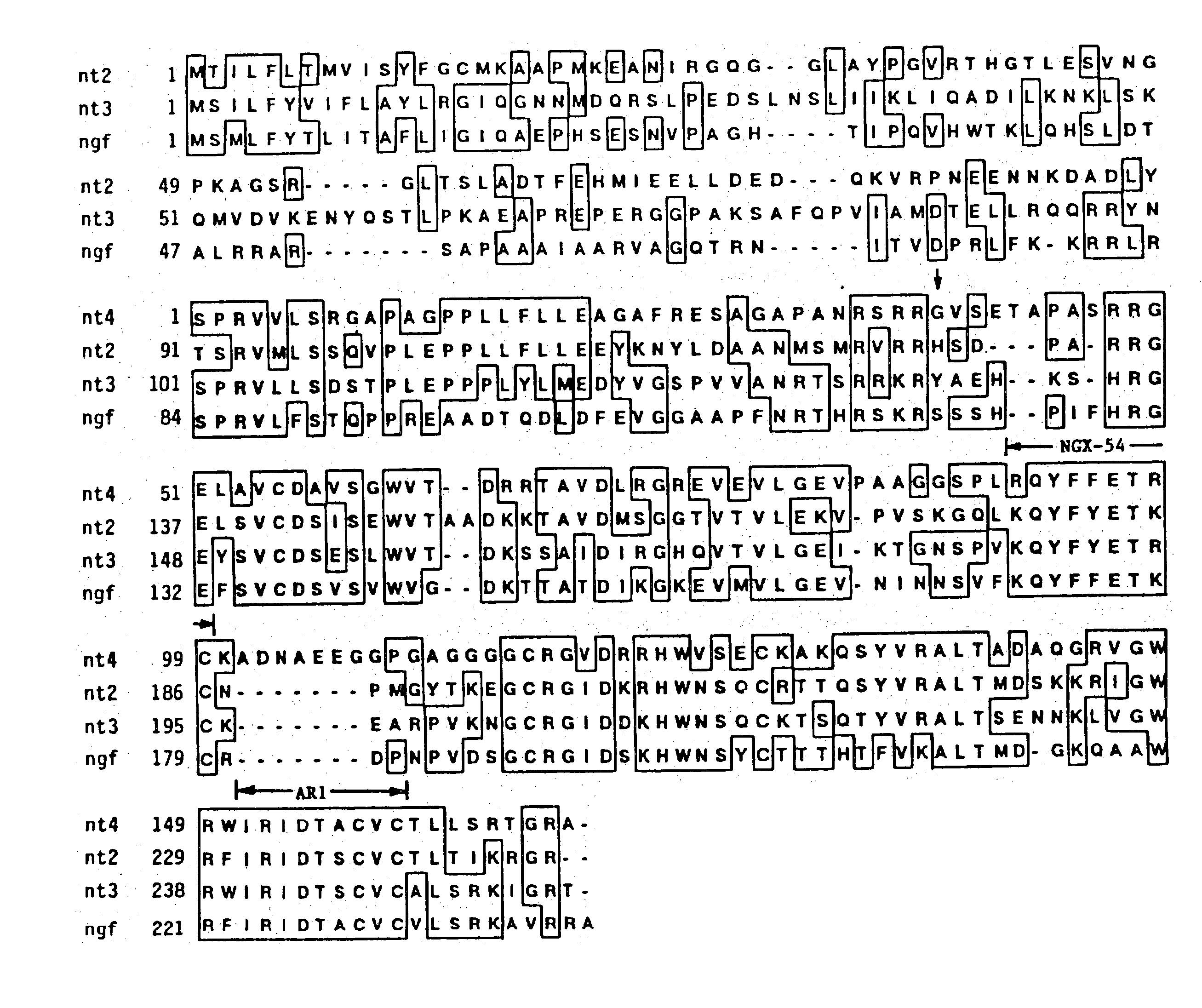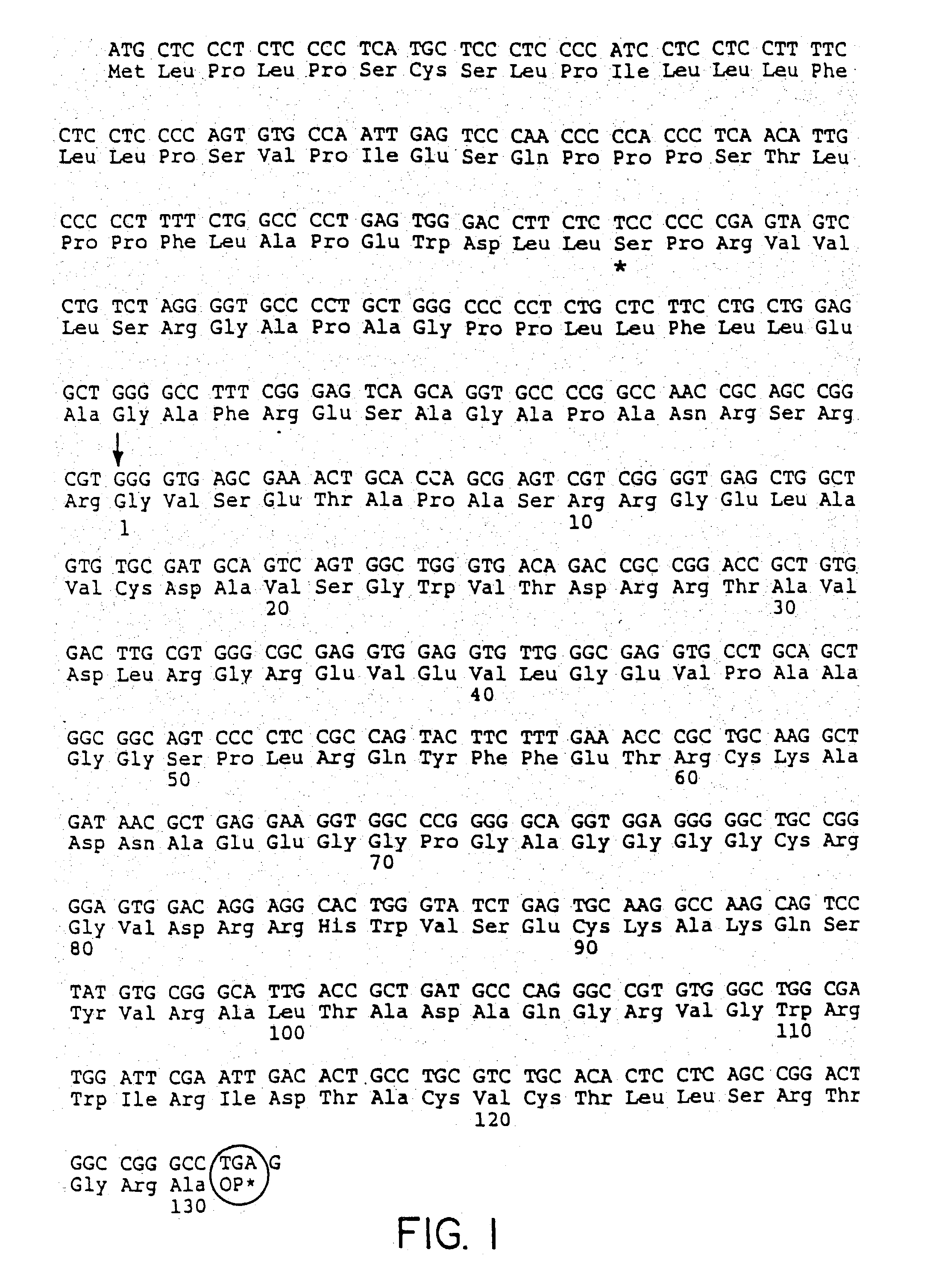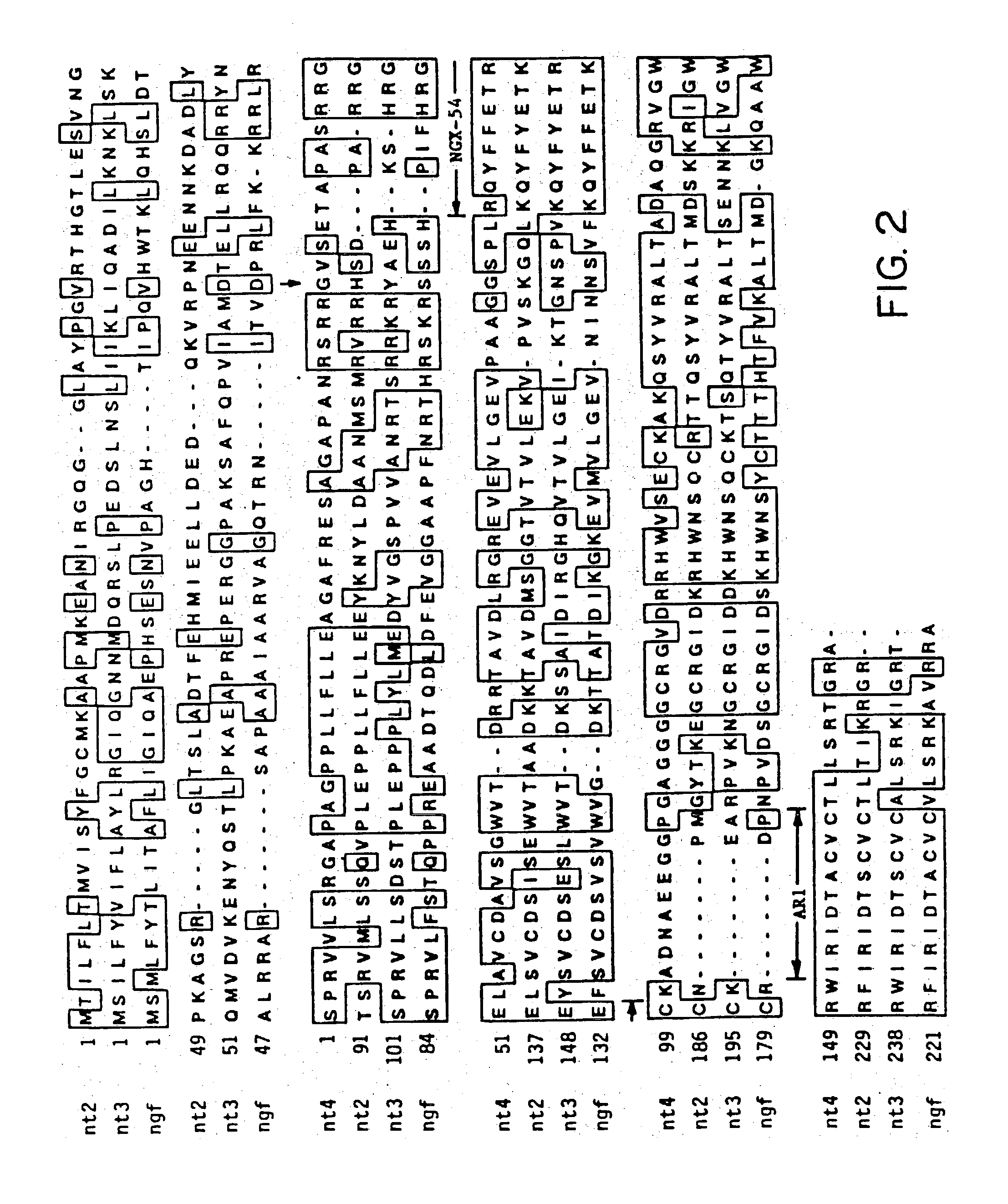Novel neurotrophic factor immunoassays
- Summary
- Abstract
- Description
- Claims
- Application Information
AI Technical Summary
Problems solved by technology
Method used
Image
Examples
example ii
[0135] The following protocol for expressing NT-4 DNA and purifying the resultant NT-4 is expected to provide sufficient NT-4 for assay purposes. This example also provides expected assays to be employed to test the purified NT-4 and compare it to NGF.
[0136] A cytomegalovirus-based expression vector called pRK5, described in Gorman, et al., 1990, DNA and Protein Engineering Techniques 2:1 and in EP Pub. No. 307,247, published Mar. 15, 1989, is employed as the expression vector. The NT-4 genomic DNA is cut from the phage in which it was cloned. This DNA fragment is then ligated into pRK5 previously cut with the appropriate restriction enzymes to accommodate the DNA fragment using standard ligation methodology (Maniatis it al., 1982, Molecular Cloning: A Laboratory Manual, Cold Spring Harbor Laboratory, New York). The resulting vector is called pRK-5hNT-4.
[0137] A human embryonal kidney 293 cell line (Graham. et al., 1977, J. Gen. Virol. 36:59) is grown to confluence. Ten .mu.g of the...
example iii
[0151] To identify naturally occurring amino acid sequence variants of NT-4, the genomic DNA fragment described above, comprising the coding sequence for mature human NT-4, was used as a hybridization probe to screen for homologous DNAs in the human fetal brain cDNA library (Rosenthal, et al., 1987, EMBO J., 6:3641) and in a human lymphocyte genomic DNA library (Stratagene, La Jolla, Calif.).
[0152] Hybridization and washing of filters containing the library DNAs were performed under high stringency conditions: Hybridization of radiolabelled NT-4 probe to the filters was performed in a solution of 50% formamide. 5.times.SSC (1.times.=0.15 M NaCl, 0.015 M sodium citrate), 0.1% sodium dodecyl sulfate (SDS), 0.1% sodium pyrophosphate, 50 mM sodium phosphate pH 6.8, 2.times.Denhardt's solution (1.times.=0.02% Ficoll, 0.02% polyvinylpyrrolidone, 0.02% bovine serum albumin), 10% dextran sulfate, at 42.degree. C. for 20 hrs. Washing of the filters was performed in an aqueous solution of 0.1...
PUM
| Property | Measurement | Unit |
|---|---|---|
| Immunogenicity | aaaaa | aaaaa |
Abstract
Description
Claims
Application Information
 Login to View More
Login to View More - R&D
- Intellectual Property
- Life Sciences
- Materials
- Tech Scout
- Unparalleled Data Quality
- Higher Quality Content
- 60% Fewer Hallucinations
Browse by: Latest US Patents, China's latest patents, Technical Efficacy Thesaurus, Application Domain, Technology Topic, Popular Technical Reports.
© 2025 PatSnap. All rights reserved.Legal|Privacy policy|Modern Slavery Act Transparency Statement|Sitemap|About US| Contact US: help@patsnap.com



